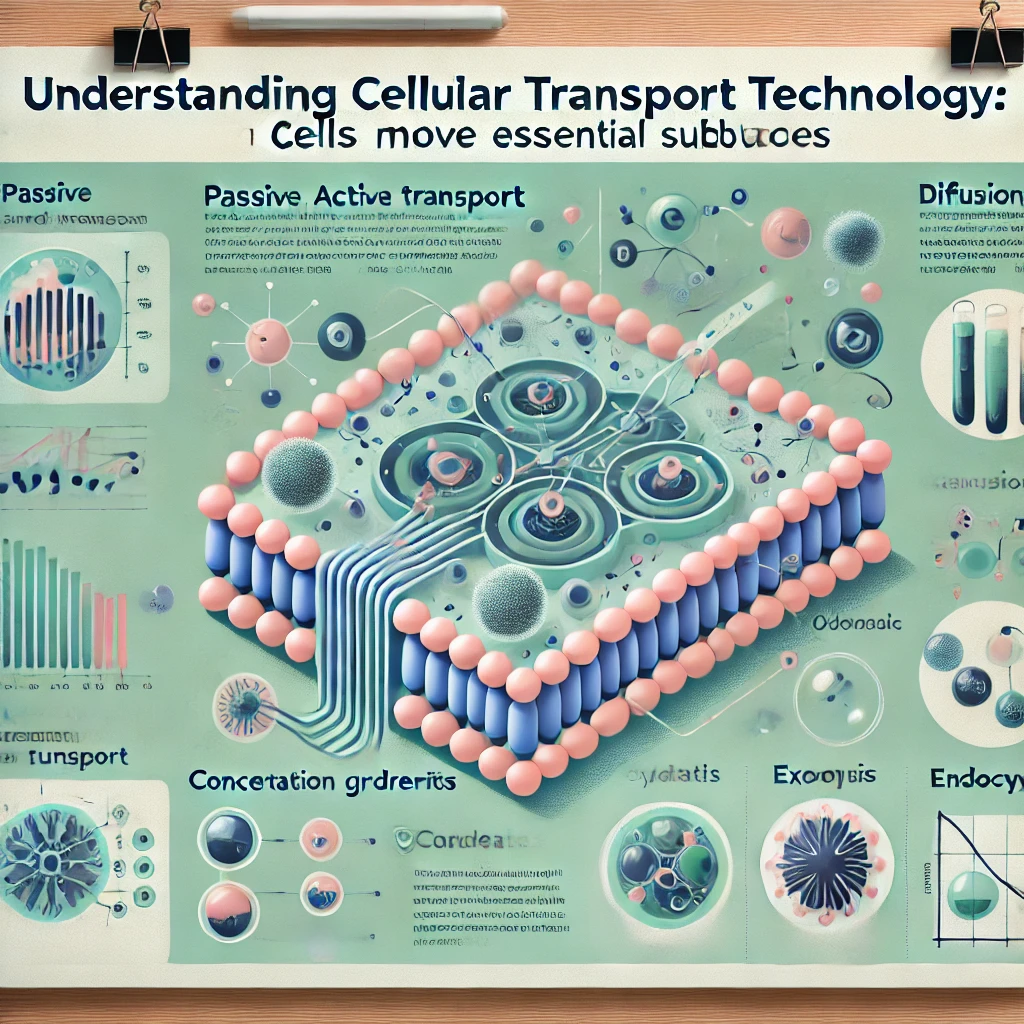Cells are the building blocks of life, and to function properly, they rely on cellular transport technology to move vital substances in and out. Cellular transport is a fascinating and complex process that ensures nutrients, oxygen, and other essential molecules reach every cell in our bodies. In this article, we will explore the various types of cellular transport, the mechanisms involved, and why these processes are crucial for life.
Table of Contents
What is Cellular Transport Technology?
Cellular transport technology refers to the different methods cells use to move substances across their membranes. Cells are surrounded by a cell membrane, a selectively permeable barrier that controls what enters and exits. The transport process ensures that cells maintain a balance of ions, nutrients, and water, which is vital for their survival and function.
Importance of Cellular Transport
Without effective transport mechanisms, cells would be unable to receive the nutrients they need or remove waste. This balance is necessary for:
- Energy production
- Growth and repair
- Maintaining cell structure and function
Types of Cellular Transport
There are two main types of cellular transport: passive transport and active transport. Each type serves a different purpose and uses distinct mechanisms.
1. Passive Transport
Passive transport is the movement of substances across the cell membrane without using cellular energy. This type of transport relies on the natural movement of molecules from areas of high concentration to areas of low concentration, known as diffusion.
Types of Passive Transport
a) Simple Diffusion
In simple diffusion, small, non-polar molecules like oxygen and carbon dioxide pass directly through the cell membrane. This process does not require any transport proteins.
b) Facilitated Diffusion
In facilitated diffusion, larger or polar molecules (e.g., glucose, ions) require the help of special proteins called channel or carrier proteins to move across the membrane. These proteins facilitate the transport process without using energy.
c) Osmosis
Osmosis is a special type of diffusion that refers to the movement of water across the cell membrane. Water moves from areas of lower solute concentration to higher solute concentration to maintain balance within the cell.
Benefits of Passive Transport
- Energy Efficient: Passive transport does not require ATP (energy), making it efficient for basic cellular functions.
- Maintains Balance: Helps cells maintain equilibrium with their surroundings.
2. Active Transport
Active transport requires energy, usually in the form of ATP, to move substances against their concentration gradient (from areas of low concentration to high concentration). This process is crucial for maintaining the cell’s internal environment, especially when the concentration of certain molecules needs to be regulated.
Types of Active Transport
a) Primary Active Transport
Primary active transport uses ATP directly to transport molecules. An example is the sodium-potassium pump, which moves sodium ions out and potassium ions into the cell. This pump plays a key role in nerve and muscle cell function.
b) Secondary Active Transport
In secondary active transport, energy is used indirectly. This process relies on the energy created by primary active transport. For example, the sodium-glucose co-transporter uses the sodium gradient created by the sodium-potassium pump to transport glucose into the cell.
Importance of Active Transport
- Maintains Concentration Gradients: Essential for cells to perform specialized functions, like nerve impulse transmission.
- Supports Cellular Activities: Enables cells to absorb nutrients even when concentrations are low outside the cell.
Endocytosis and Exocytosis: Bulk Transport Mechanisms
In addition to passive and active transport, cells also use bulk transport mechanisms like endocytosis and exocytosis to move large particles or molecules across the membrane.
Endocytosis
Endocytosis is the process by which cells engulf external materials, bringing them into the cell. This can happen in two ways:
- Phagocytosis: “Cell eating,” where large particles, such as bacteria, are engulfed by the cell.
- Pinocytosis: “Cell drinking,” where the cell takes in fluids and small molecules.
Exocytosis
Exocytosis is the opposite of endocytosis. It involves the expulsion of large molecules, like proteins or waste products, from the cell. This process is essential for cells to release hormones and enzymes.
Functions of Bulk Transport
- Waste Removal: Exocytosis helps cells eliminate waste.
- Nutrient Intake: Endocytosis allows cells to take in large nutrients or particles they need.
The Role of Cellular Transport in Health
Proper cellular transport is crucial for health. Any disruption in these processes can lead to health issues. For example:
- Malfunctioning Sodium-Potassium Pump: Can lead to nerve and muscle disorders.
- Defective Glucose Transporters: May result in diabetes-like symptoms.
- Osmotic Imbalances: Can cause cells to shrink or burst, impacting organ function.
Conclusion: The Vitality of Cellular Transport Technology
Cellular transport technology is fundamental for the survival and function of cells. Passive and active transport processes work together to ensure cells receive essential substances and eliminate waste. From the diffusion of oxygen to the active pumping of ions, these mechanisms keep cells healthy and functional.
